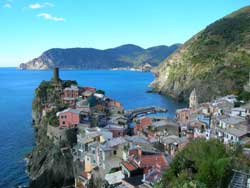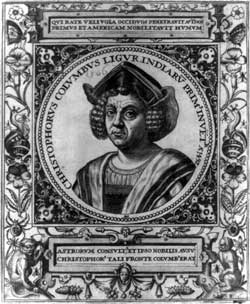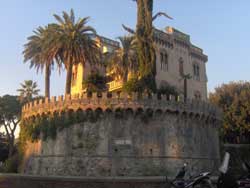Ligurian Art and Culture, from Prehistory to Gothic
 The history of Ligurian art begins in the caves of the Ponente, with the venus and the horse graffitied on a wall of the Balzi rossi , but also the ceramics of the funerary equipment of the Young Prince in the Finale area and the graffiti of Mount Bego .
The history of Ligurian art begins in the caves of the Ponente, with the venus and the horse graffitied on a wall of the Balzi rossi , but also the ceramics of the funerary equipment of the Young Prince in the Finale area and the graffiti of Mount Bego .
During the Iron Age, Ligurian society was divided into social classes, as evidenced by the findings of the necropolis of Chiavari and furthermore, that of Genoa describes a civilization dedicated to trade and exchange with other Etruscan, Greek and Phoenician peoples. The castellari then, are what remains of the defensive architecture of the period, with walls up to 5 meters thick.
Mount Bego in the Ligurian Alps is an imposing massif that hosts more than 100,000 rock carvings, left by shepherds over three centuries for religious purposes, perhaps as a tribute to the gods of nature. On the opposite side, in Lunigiana , about sixty stele statues of gray sandstone were found, sculpted with male or female forms, of which neither the meaning nor the author is known, but which were probably dedicated to the deities from prehistoric agricultural populations.
 The Lunigiana area takes its name from the Roman site of Luni , founded in 177 BC for the export of Apuan marble. The remains of the ancient Roman city are well preserved and can be visited, as well as a patrician villa in Albisola Superiore and the Roman theater in Ventimiglia. But Roman remains in Liguria are found almost everywhere, such as the milestone on the Via Julia Augusta from 13 BC. C. which indicates the distance between Chiappa and Rome, 553 miles.
The Lunigiana area takes its name from the Roman site of Luni , founded in 177 BC for the export of Apuan marble. The remains of the ancient Roman city are well preserved and can be visited, as well as a patrician villa in Albisola Superiore and the Roman theater in Ventimiglia. But Roman remains in Liguria are found almost everywhere, such as the milestone on the Via Julia Augusta from 13 BC. C. which indicates the distance between Chiappa and Rome, 553 miles.
In Albenga , which became Christian between the 4th and 5th centuries, there is the baptistery, a work of early Christian art, which preserves the only Byzantine mosaic in northern Italy outside Ravenna.
There are testimonies of the early Christian and Lombard times such as the inscription in the parish church of Finale Ligure of 517, and of the Byzantine and Macedonian arts of the tenth and eleventh centuries in the abbey of San Fruttuoso di Capodimonte on the promontory of Portofino.
The Romanesque period
The Romanesque, after the year 1000, was established everywhere both in civil buildings and (and above all) in Ligurian sacred buildings, and examples of it can be observed almost everywhere: just to mention a few, the cathedral of Ventimiglia and Albenga, San Siro in Sanremo; Santa Maria di Castello, San Donato, the sides of the cathedral of San Lorenzo in Genoa; in the Spezzino the cathedral of Brugnato and San Pietro in Portovenere.
The numerous bridges in Liguria are Romanesque and medieval, such as in Taggia sull'Argentina and Andora sulla Mèrula , but also the shorter ones like in Dolceacqua, Pignone and Zuccarello .
Gothic art in Liguria
The arrival of the Gothic coincides with the expansion of Genoa and the municipal autonomies. The black and white stripes on the facades of Romanesque churches and palaces are maintained but the new style is established in many churches such as San Lorenzo and Sant'Agostino in Genoa, San Fruttuoso di Capodimonte and Santa Margherita d'Antiochia in Vernazza. The castles , above all, become Gothic and arcades are born in the streets such as in Chiavari, Taggia, Zuccarello.
 Many foreign workers worked in Ligurian art, thanks also to the exchanges that Genoa had with distant countries such as Spain and Flanders but also with the closest lands such as Tuscany and Lombardy.
Many foreign workers worked in Ligurian art, thanks also to the exchanges that Genoa had with distant countries such as Spain and Flanders but also with the closest lands such as Tuscany and Lombardy.
The annunciation of Santa Maria di Castello in Genoa is by the German Giusto di Ravensburg, the author of the polyptych of the sanctuary of Montegrazie di Imperia is the Milanese Carlo Braccesco, in the cathedral of Sarzana there is the Cross of Maestro Guglielmo (1138) of the school Tuscan and Umbrian and, the funeral monument to Margaret of Brabant is by Giovanni Pisano .
Gothic painting is also established in the late fifteenth century, with the brothers Biasacci and Giovanni Canavesio who worked in western Liguria, and in the early sixteenth century, the school of Lodovico Brea is expressed in an elegant Ligurian-Provençal late Gothic painting.
Authors of many of the portals carved in slate, emblems of the prestige of the most powerful families, were the school of stone masters of Cenova to the west, and the Gaggini da Bissone brothers in Genoa.